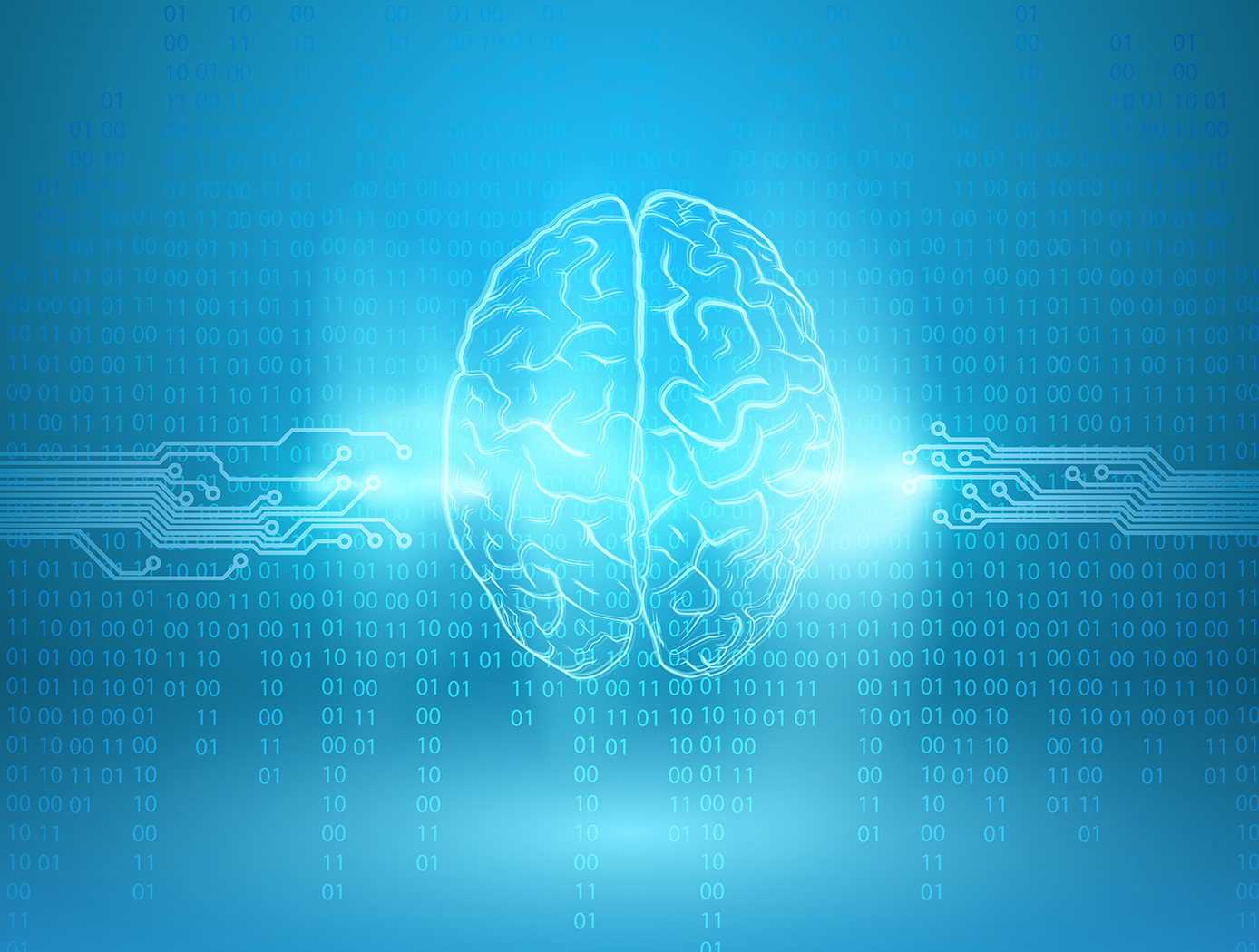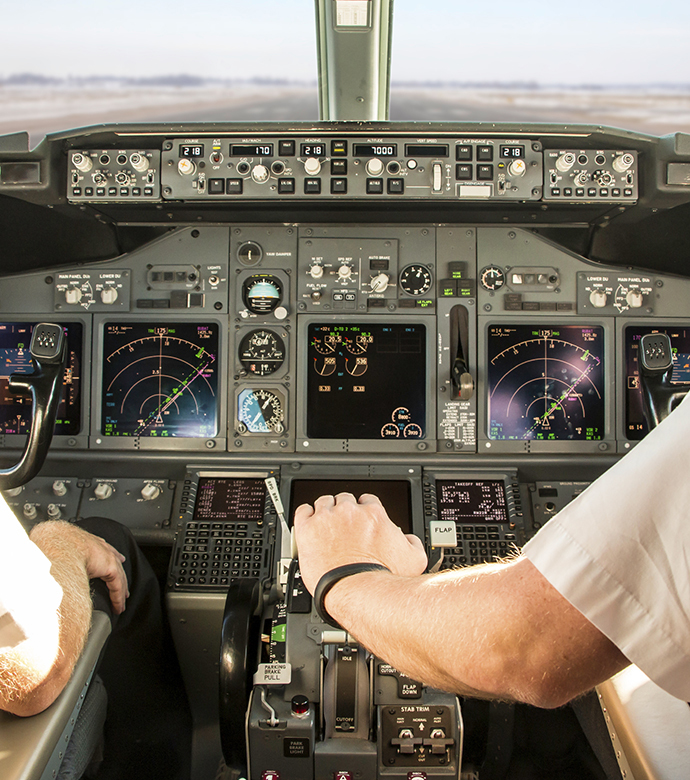Functional Near-Infrared Spectroscopy (fNIRS) Cognitive Brain Monitor
health medicine and biotechnology
Functional Near-Infrared Spectroscopy (fNIRS) Cognitive Brain Monitor (LEW-TOPS-84)
New signal-processing techniques excludes motion artifacts to yield more accurate data
Overview
Innovators at NASA's Glenn Research Center have developed a Functional Near-Infrared Spectroscopy (fNIRS) Cognitive Brain Monitor with improved signal processing to obtain more accurate data. fNIRS has been used successfully to monitor cognitive states and activity, and Glenn's system can be used to continuously monitor brain function during safety-critical tasks, such as flying an airplane or driving a train. Using head-worn sensors, the technique employs near-infrared light and advanced signal processing to allow real-time, in-task monitoring. The system not only determines changes in cognitive state by tracking blood hemoglobin levels in the brain, but also filters non-relevant artifacts, such as the probes' own motion, rendering the collected data even more accurate. Glenn's novel use and refinement of fNIRS signals stands to improve safety in a wide variety of applications and environments.
The Technology
Functional near-infrared spectroscopy (fNIRS) is an emerging hemodynamic neuroimaging brain-computer interface (BCI) technology that indirectly measures neuronal activity in the brain's cortex via neuro-vascular coupling. fNIRS works by quantifying hemoglobin-concentration changes in the brain based on optical intensity measurements, measuring the same hemodynamic changes as functional magnetic resonance imaging (fMRI). With enough probes in enough locations, fNIRS can detect these hemodynamic activations across the subject's entire head, thus allowing the determination of cognitive state through the use of pattern classification. fNIRS systems offer low-power, low-cost, highly mobile alternatives for real-time monitoring in safety-critical situations.
Glenn's specific contribution to this field is the algorithms capable of removing motion artifacts (environment- or equipment-induced errors) from the device's head-worn optical sensors. In other words, Glenn's adaptive filter can determine the presence of a potential motion artifact based on a phase shift in the data measured; identify the artifact by examining the correlation between the phase shift and changes in hemoglobin concentration; and finally remove the artifact using Kalman filtering whenever changes in hemoglobin level and changes in the phase shift are not correlated. Glenn's breakthrough allows the advantages of fNIRS to be used for non-invasive real-time brain monitoring applications in motion-filled environments that could potentially save lives.


Benefits
- Improved safety: Continuous monitoring of brain activity during safety-critical tasks could prevent serious accidents
- High accuracy: Removing motion artifacts allows real-world data capture to approach laboratory quality
- Portability: The system features comfortable head-worn sensors, and is compact enough to fit into smaller spaces
Applications
- Safety simulations, training, and monitoring for airline pilots, train and mass transit engineers, ship captains, truck drivers, crane and other heavy-equipment operators, and air traffic controllers
- Military simulations and training
- In-home, real-time monitoring and feedback during patient rehabilitation for cognitive impairment or depression
- Replacement for or supplement to functional brain imaging
Similar Results

Oculometric Testing for Detecting/Characterizing Mild Neural Impairment
To assess various aspects of dynamic visual and visuomotor function including peripheral attention, spatial localization, perceptual motion processing, and oculomotor responsiveness, NASA developed a simple five-minute clinically relevant test that measures and computes more than a dozen largely independent eye-movement-based (oculometric) measures of human neural performance. This set of oculomotor metrics provide valid and reliable measures of dynamic visual performance and may prove to be a useful assessment tool for mild functional neural impairments across a wide range of etiologies and brain regions. The technology may be useful to clinicians to localize affected brain regions following trauma, degenerative disease, or aging, to characterize and quantify clinical deficits, to monitor recovery of function after injury, and to detect operationally-relevant altered or impaired visual performance at subclinical levels. This novel system can be used as a sensitive screening tool by comparing the oculometric measures of an individual to a normal baseline population, or from the same individual before and after exposure to a potentially harmful event (e.g., a boxing match, football game, combat tour, extended work schedule with sleep disruption, blast or toxic exposure, space mission), or on an ongoing basis to monitor performance for recovery to baseline. The technology provides set of largely independent metrics of visual and visuomotor function that are sensitive and reliable within and across observers, yielding a signature multidimensional impairment vector that can be used to characterize the nature of a mild deficit, not just simply detect it. Initial results from peer-reviewed studies of Traumatic Brain Injury, sleep deprivation with and without caffeine, and low-dose alcohol consumption have shown that this NASA technology can be used to assess subtle deficits in brain function before overt clinical symptoms become obvious, as well as the efficacy of countermeasures.

Polymer Electrolyte-Based Ambient Temperature Oxygen Microsensor
Conventional ambient-temperature oxygen sensors are limited in various ways: optically based sensors can be expensive and challenging to manufacture; electrochemical cells with liquid electrolytes can have limited lifetimes and become leak sources; and both types of sensors are difficult to miniaturize. These problems are addressed with Glenn's novel ambient temperature oxygen microsensor, which is based on a Nafiontm polymer electrolyte, microfabricated using thin-film technologies. In the past, one drawback of Nafiontm film has been that it can lose conductivity when the moisture content in the film is too low, potentially affecting sensor operation. Glenn researchers devised a method to use certain salts to hold water molecules in the Nafiontm film structure at room temperature. The presence of these salts provides extra sites in the film to promote proton (H+) mobility, thus improving film conductivity and overall sensor performance, particularly in arid and high-temperature environments.
The innovative use of metal/metal oxide as the reference electrode enables miniaturization by eliminating the reference gas and sealing the reference electrode. The combination of interdigitized electrodes with the unique metal/metal oxide reference electrode permits sensor operation in either potentiometric or amperometric mode, as appropriate. In potentiometric mode, which measures voltage differences between working and reference electrodes in different gases, the voltage differences can be monitored with a voltmeter; however, the sensor itself does not need a power source. In room-temperature testing, the sensor achieved repeatable responses to 21 percent oxygen in nitrogen (using nitrogen as a baseline gas), and also detected oxygen from 7 to 21 percent, making Glenn's breakthrough technology usable for personal health monitoring as well as fire detection, fuel-leak detection, and environmental monitoring.

System for Incorporating Physiological Self-Regulation Challenge into Parcourse/Orienteering Type Games and Simulations
Although biofeedback is an effective treatment for various physiological problems and can be used to optimize physiological functioning in many ways, the benefits can only be attained through a number of training sessions, and such gains can only be maintained over time through regular practice. However, adherence to regular training has been a problem that has plagued the field of physiological self-regulation limiting its utility. As with any exercise, incorporating biofeedback training with another activity encourages participation and enhances its usefulness.

Biocybernetic VR/AR Training System for De-Escalating Conflict
NASA’s biocybernetic system is a cutting-edge technology designed to cultivate emotional regulation skills. It leverages the concept of biocybernetic adaptation, where the trainee engages with virtual entities, such as characters in VR/AR/MR environments, whose behavior dynamically responds to the trainee's physiological signals. This responsive system provides real-time feedback, incentivizing the trainee to attain a calmer physiological state.
The key components of this VR innovation include:
· Head-mounted display hardware
· Physiological monitoring hardware, tracking heart rate, breathing, sweat, breath, and brain waves
· Software, powered by the Biocybernetic Loop (BL) Engine, integrating physiological data into the VR simulation
· Character response avatars
· Integration of the trainee's biofeedback data with the VR environment
This technology relies on two functional elements working in unison to adapt the behavior and appearance of VR/AR/MR characters. Inference of the trainee's emotional state from physiological signals requires the implementation of advanced machine learning and modeling techniques. A pattern comparator stores templates of physiological patterns and continually assesses the proximity of the trainee's real-time physiological activity to the desired patterns.
The pattern comparator calculates a closeness score in relation to one or more reference patterns, transmitting this data to the VR/AR/MR environment components. Consequently, the level of threat or cooperation presented by virtual characters is dynamically adjusted in response to the closeness score, creating an immersive and adaptive training experience.

Portable Medical Diagnosis Instrument
The technology utilizes four cutting-edge sensor technologies to enable minimally- or non-invasive analysis of various biological samples, including saliva, breath, and blood. The combination of technologies and sample pathways have unique advantages that collectively provides a powerful analytical capability. The four key technology components include the following: (1) the carbon nanotube (CNT) array designed for the detection of volatile molecules in exhaled breath; (2) a breath condenser surface to isolate nonvolatile breath compounds in exhaled breath; (3) the miniaturized differential mobility spectrometer (DMS) -like device for the detection of volatile and non-volatile molecules in condensed breath and saliva; and (4) the miniaturized circular disk (CD)-based centrifugal microfluidics device that can detect analytes in any liquid sample as well as perform blood cell counts. As an integrated system, the device has two ports for sample entry a mouthpiece for sampling of breath and a port for CD insertion. The breath analysis pathway consists of a CNT array followed by a condenser surface separating liquid and gas phase breath. The exhaled breath condensate is then analyzed via a DMS-like device and the separated gas breath can be analyzed by both CNT sensor array again and by DMS detectors.


